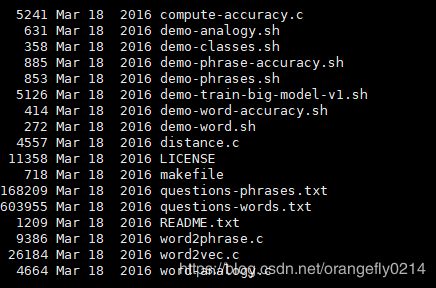利用word2vec实现关键词聚类
一、训练自己的词向量
通常需要以下4个步骤:
1.语料准备,从原始的语料中提取出我们需要的语料信息
2.分词:这里采用jieba分词,另外加载了自定义的词典和停用词典,停用词典使用的是哈工大停用词词典https://github.com/orangefly0214/stopwords,自定义词典和自己训练的词向量的主题相关,需要自己定义,自定义词典的格式可参加jieba官网给出的格式,https://raw.githubusercontent.com/fxsjy/jieba/master/extra_dict/dict.txt.big,第一列是单词,第二列是词频,第三列是标注出来的词性,如果没有,二三列也可以默认为空。
3.加载分词后的语料利用gensim训练word2vec模型。训练时,可以用word2vec.Text8Corpus来加载需要训练的语料,另外需要自己设置窗口大小,迭代次数以及词向量的维度等等。
代码如下:
#! usr/bin/env python3
# -*- coding:utf-8 -*-
import jieba
import jieba.posseg as psg
from gensim.models import word2vec
import gensim
import re
#提取语料
def extract(path,save):
with open(path,'r',encoding='utf-8')as fd:
lines=fd.readlines()
for i,line in enumerate(lines):
if i%5000==0:
print("has extracted "+str(i)+" rows.")
list=line.split('\t')
sentence="".join(list[2:])
sentence=re.sub(r'<[^>]+>','',sentence)
sentence=re.sub(r'[0-9]','',sentence)
with open(save,'a+',encoding='utf-8') as wd:
wd.write(sentence)
fd.close()
#对语料进行分词
#加载停用词
def getStopwords(stopwords_path):
stopwords = []
with open(stopwords_path, "r", encoding='utf8') as f:
lines = f.readlines()
for line in lines:
stopwords.append(line.strip())
return stopwords
#分词
def segment(corpus,stopwords_path,cut_save):
stopwords=getStopwords(stopwords_path)
segmentCorpus = open(cut_save, 'a', encoding='utf8')
with open(corpus,'r', encoding='utf8') as f:
text = f.readlines()
for i,sentence in enumerate(text):
if i%5000==0:
print("has segmentation "+str(i)+" rows.")
sentence = list(jieba.cut(sentence))
sentence_segment = []
for word in sentence:
if word not in stopwords:
sentence_segment.append(word)
segmentCorpus.write(" ".join(sentence_segment))
del text
f.close()
segmentCorpus.close()
def run(data_path,corpus_path,user_dict,stopwords_path,cutCorpus,output1,output2):
#提取语料
extract(data_path,corpus_path)
print("finished extrac corpus---")
# 加载自定义词典
jieba.load_userdict(user_dict)
segment(corpus_path,stopwords_path,cutCorpus)
print('finished segment---')
#训练词向量
sentences = word2vec.Text8Corpus(cutCorpus)
model = word2vec.Word2Vec(sentences, size=300, window=10, min_count=5,iter=20)
model.save(output1)
model.wv.save_word2vec_format(output2, binary=False)
# model = gensim.models.Word2Vec.load('vec.model')
print(model.most_similar('债券'))
print()
print(model.most_similar('股票'))
print()
print(model.most_similar('腾讯'))
print()
if __name__ == '__main__':
data_path='./finance_classes.txt'
corpus_path='./corpus.txt'
stopwords_path='./stopwords.dat'
user_dict='./user_dict.txt'
cutCorpus='./cutCorpus.txt'
output1='./models/vec.model'
output2='./models/word2vec_format'
run(data_path,corpus_path,user_dict,stopwords_path,cutCorpus,output1,output2)
二、利用google官方提供的方法实现关键词聚类
1. 上面已经利用现有的语料实现词向量生成,接下来我们可以使用google官网提供的方法来利用word2vec实现对关键词的聚类
官网代码下载链接:https://code.google.com/archive/p/word2vec/source
2.下载了这些source文件之后,需要在文件所在目录执行make命令,
执行make命令之前:
当 make 命令第一次执行时,它扫描 Makefile 找到目标以及其依赖。如果这些依赖自身也是目标,继续为这些依赖扫描 Makefile 建立其依赖关系,然后编译它们。一旦主依赖编译之后,然后就编译主目标(这是通过 make 命令传入的)。
执行make命令之后:

现在,假设你对某个源文件进行了修改,你再次执行 make 命令,它将只编译与该源文件相关的目标文件,因此,编译完最终的可执行文件节省了大量的时间。
3.利用google官方的word2vec来训练自己的词向量。
./word2vec -train /data0/shixi_jiajuan/cutCorpus.txt -output vectors.bin -cbow 0 -size 300 -window 10 -negative 0 -hs 1 -sample 1e-3 -threads 12 -binary 14.利用官方提供的聚类方法,Kmeans来实现关键词聚类
./distance vectors.bin
参考:
https://blog.csdn.net/zhaoxinfan/article/details/11069485
